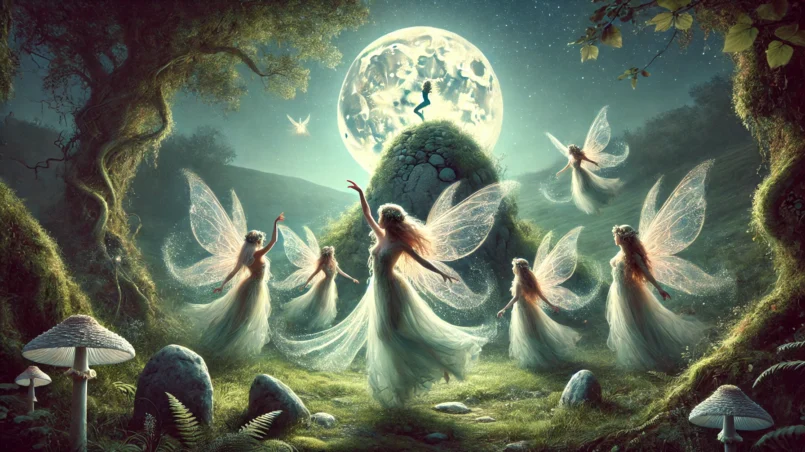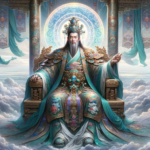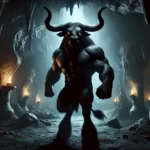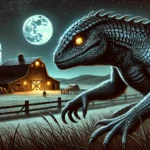Ireland’s folklore is filled with captivating stories and legendary creatures that have been passed down through generations. From fearsome monsters to mystical beings, these tales offer a glimpse into the ancient beliefs and imaginations of the Irish people. In this blog, we’ll explore the top 10 Irish monsters and myths, uncovering the fascinating stories behind each one.
1. Leprechauns
Leprechauns are a beloved and iconic part of Irish folklore, often depicted as small, bearded men wearing green coats and hats. These solitary creatures are traditionally known as cobblers for the fairy folk. Legends say that leprechauns hide their pots of gold at the end of rainbows, and if caught, they can grant three wishes in exchange for their freedom.
Leprechauns symbolize luck and are deeply ingrained in Irish culture, often associated with St. Patrick’s Day celebrations around the world. They represent a playful and whimsical aspect of Irish mythology, blending the mystical with the lighthearted. Their tales add a sense of magic and fun to the rich heritage of Irish folklore.
2. Banshees (Bean Sídhe)
Banshees, or ‘Bean Sídhe’ in Irish folklore, are known as harbingers of death. These ghostly women are believed to foretell the death of a family member with their mournful cries or wails. Their appearance can vary greatly: some are described as beautiful young women with long, flowing hair, while others are depicted as older women with frightening features. Despite their differing looks, the presence of a banshee is always eerie and sorrowful.
Banshees are an important part of Irish legend, symbolizing the close connection between the Irish people and the spirit world. They are thought to be the spirits of women who died in childbirth or were murdered, and their wails express their sorrow. In many stories, banshees are connected to specific families, especially those of old Irish descent, serving as a reminder of the cycle of life and death.
3. Balor
Balor, a prominent figure in Irish mythology, is best known as a leader of the Fomorians, a group of hostile and monstrous beings. He is often depicted as a giant with a single, destructive eye that brings death and devastation when opened. According to legend, Balor’s eye was so poisonous that it needed to be kept covered, except during battle.
Balor’s defeat at the hands of the god Lugh is a significant moment in Irish lore, symbolizing the triumph of light and skill over brute force and evil. Balor represents the primal chaos and raw power of ancient myths, embodying darkness and the potential for ruin. This story highlights the ongoing struggle between good and evil, a common theme in mythology.
4. Cailleach
The Cailleach is a well-known figure in Irish and Scottish folklore, often depicted as an ancient hag and a goddess of winter. She symbolizes the harsh, unforgiving nature of winter, bringing storms and snow. The Cailleach is also considered a creator goddess, using her powers to shape the landscape.
According to many stories, she turns to stone during the warmer months and awakens as winter returns. This transformation represents the changing seasons and the cycle of life and death. The Cailleach is a figure of great respect, embodying the raw power and wisdom of nature.
5. Selkies
Selkies are enchanting creatures from Irish and Scottish folklore known for their ability to transform from seals into humans. In the water, they appear as seals, but on land, they shed their skins to become human. Selkie stories often explore themes of longing and freedom, frequently involving selkies being coerced into human relationships by someone who hides their seal skin.
These tales highlight the deep connection between the Celtic people and the sea, reflecting the balance between the wildness of nature and the human world. Selkies symbolize the yearning for what is just beyond reach, whether it be love, freedom, or the return to one’s true home.
6. Púca
The Púca is a fascinating figure in Irish folklore, known for its ability to change shapes and its mischievous nature. This mysterious creature can take on many forms, including horses, goats, cats, and even human-like figures with animal features. Púcas can be both helpful and tricky; they might bring good luck and guidance, but they can also lead people astray with their pranks.
During Samhain, a traditional Celtic festival marking the end of harvest, the Púca is said to be especially active and powerful. Stories about the Púca highlight the unpredictable and sometimes dangerous elements of nature, capturing the whimsical and mysterious aspects of the world around us.
7. Changelings
Changelings are a mysterious and eerie part of Irish folklore. These beings are believed to be fairy children left in place of human babies who have been stolen by fairies. The belief in changelings reflects ancient fears and serves as an explanation for unexplained illnesses or changes in behavior, particularly in infants.
These tales act as cautionary stories, warning about the dangers of the fairy world and emphasizing the need to protect the young and vulnerable. Changelings are often described as sickly, with unusual features and behaviors. Their presence in folklore highlights the deep-rooted belief in the supernatural in everyday life and the ways people made sense of the unknown.
8. The Dullahan
The Dullahan is a frightening character in Irish folklore, known as a headless rider on a black horse. This ghostly figure roams the countryside at night, carrying its head under its arm or lifting it high to see far distances. The Dullahan is believed to be a sign of death; wherever it stops, someone is said to die soon after.
Unlike other ghostly figures, the Dullahan doesn’t interact with people except to take a soul. This story highlights the Irish fascination with the supernatural and the certainty of death, mixing fear with an understanding of life’s fragility.
9. Faeries
Irish Faeries, known as ‘Aos Sí’, are a central part of Celtic folklore. These mystical beings are believed to live in a parallel world, inhabiting ancient mounds and natural spaces. Unlike the tiny fairies often seen in popular culture, Irish faeries are powerful and are both respected and feared.
Deeply connected to nature and the land, the Aos Sí can influence events in the human world. Interactions with them can be both beneficial and risky. Faeries in Irish tales are guardians of their realms, and their stories often emphasize the importance of respecting both the seen and unseen worlds.
10. Kelpie
The Kelpie is a fascinating and eerie creature from Celtic mythology, appearing in both Irish and Scottish folklore. This shape-shifting water spirit lives in lakes and rivers and is usually seen as a sleek black horse, though it can also take on a human form. The Kelpie lures unsuspecting people, especially children, to ride on its back. Once they do, they become trapped, and the Kelpie drags them into the water.
The story of the Kelpie serves as a warning about the dangers of water and the deceptive nature of malevolent spirits. In modern times, Kelpies are sometimes depicted more kindly, showing a shift towards a fascination with the mystical and magical parts of folklore.





